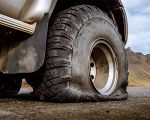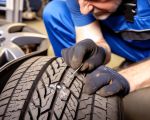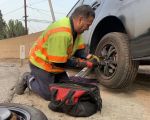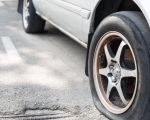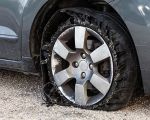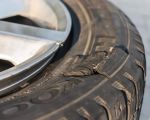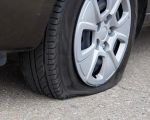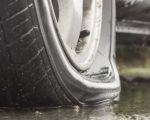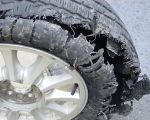How to Deal with a Flat Tire on a Motorcycle: A Complete Guide
Step 1: Stay Calm and Assess the Situation
Experiencing a flat tire while riding a motorcycle can be an alarming situation, but staying calm is key. Pull over to a safe location as soon as you can. If you’re on a busy road or highway, make sure to turn on your hazard lights to alert other drivers. The goal is to get off the road as quickly and safely as possible.
During my own experience, I was riding on a quiet country road when I suddenly felt the tire losing pressure. I quickly assessed the situation and pulled over safely. It was a stressful moment, but taking a breath and focusing on the next steps was crucial. I recommend carrying a small portable air compressor or tire repair kit for emergencies like this, especially if you’re far from home.
Step 2: Inspect the Tire and Identify the Cause
After pulling over, the next step is to inspect the tire carefully. Look for any obvious signs of punctures or damage. A sharp object such as a nail or glass might be stuck in the tire, or the tire could have simply deflated due to other reasons such as overuse or wear and tear.
In my case, I discovered a small piece of metal lodged in the tire. While some motorcyclists can repair a flat tire on the spot using a tire plug, this depends on the size and location of the puncture. For larger punctures or if you’re unsure of how to handle it, it’s best to call for roadside assistance.
Step 3: Attempt to Repair the Tire (If Possible)
If the puncture is small and you’re comfortable making repairs, you can attempt to fix the tire yourself. A basic tire repair kit typically includes tire plugs, a plug insertion tool, and sometimes a small compressor to inflate the tire once it’s repaired.
While many riders can handle small repairs, I recommend practicing this at home before relying on it during an emergency. I once had to repair a small hole with a plug, but I was fortunate to have the right tools and knowledge. If you’re not familiar with tire repairs, don’t risk it. It’s better to rely on professional assistance than to risk further damage to the tire or vehicle.
Step 4: Call for Roadside Assistance or Towing Services
If the damage is too severe for a simple fix or if you’re not comfortable making the repairs yourself, don’t hesitate to call for help. Roadside assistance services can send a tow truck or motorcycle-specific assistance vehicle to help you out.
In my experience, calling Rescue & Towing was the best choice. Within an hour, a tow truck arrived to safely transport my motorcycle to a nearby shop for repair. The convenience of having a professional service handle the situation alleviated a lot of stress. If you’re in need of reliable roadside assistance, Rescue & Towing is available to ensure you’re back on the road as quickly as possible.
Step 5: Prevent Future Flats by Maintaining Your Tires
One of the best ways to avoid dealing with a flat tire in the future is to regularly maintain your motorcycle tires. This includes checking for wear and tear, ensuring the correct tire pressure, and getting them inspected before long trips. A well-maintained tire not only reduces the risk of a flat but also improves your overall safety on the road.
Before embarking on a ride, I always make sure to check my tire pressure and inspect the tread for signs of damage. Additionally, if I’m heading out on a long journey, I make sure to have a spare tube and tire repair kit with me just in case. These preventive steps have saved me from multiple roadside issues over the years.
Step 6: When to Replace Your Motorcycle Tire
Sometimes, a flat tire can’t be repaired, and in these cases, it’s best to replace the tire. If the tire is worn out, has deep cuts, or has sustained irreparable damage from an object, don’t hesitate to get a new one. Riding on damaged tires is dangerous and can cause further damage to your motorcycle.
During one of my rides, I encountered a severe puncture that couldn’t be fixed with a repair kit. I ended up replacing the tire entirely, which ensured my safety and the reliability of my bike. Regularly inspecting and replacing your tires when necessary can prevent accidents and keep your bike in top condition.













